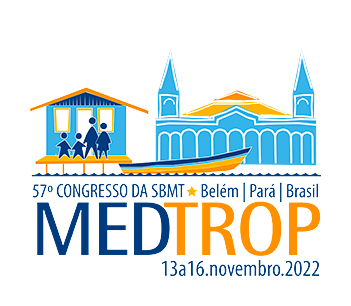Dados do Trabalho
Título
Infection of An. aquasalis, An. darlingi, An. albitarsis and Aedes aegypti by Plasmodium cynomolgi sporozoites obtained from infected Macaca mulatta
Introdução
Relapses of Plasmodium vivax caused by dormant liver hypnozoites compromise malaria eradication efforts. Nowadays, only two drugs are effective against P. viva hypnozoites, the 8-aminoquinolines primaquine and tafenoquine. However, hemotoxicity in glucose-6-phosphate dehydrogenase deficient individuals, deficient metabolism, adherence to treatment and resistance poses substantial problems for the proper efficacy and safety of these drugs and, therefore, to P. vivax control and elimination. New better drugs are needed, and the primate model of infection of Macaca mulatta (Rhesus monkeys) by Plasmodium cynomolgi is the most adequate and reliable animal model for hypnozoite research and anti-hypnozoite drug discovery and screening.
Objetivo(s)
Establish the complete cycle (vertebrate and invertebrate hosts) of Plasmodium cynomolgi in Fiocruz at Fiocruz, Rio de Janeiro, to allow screening of potential anti-hypnozoite drugs.
Material e Métodos
Plasmodium cynomolgi blood stages were inoculated intravenously in M. mulatta. Infected monkey blood was fed to different mosquito species: Anopheles aquasalis (n=1914), An. albitarsis (n=250), An. darlingi (n=283) and Aedes aegypti (n=800) females, using standard membrane feedings assays. After 7 days the intestines of the females were dissected to confirm infection. Following the course of the infection on day 14, we performed the dissection of the salivary glands to obtain sporozoites to infect a new rhesus monkey.
Resultados e Conclusão
An. albitarsis were not susceptible to P. cynomolgi. Aedes aegypti produced oocysts on day 7, but on day 14 sporozoites were not observed. An. aquasalis and An. darlingi females were susceptible to P. cynomolgi, producing oocysts on day 7 and sporozoites on day 14 visualized by microscopy, but in general low sporozoite numbers were obtained (9,000 and 2,100 sporozoites per mosquito, respectively). Rhesus monkeys were inoculated with sporozoites obtained from An. aquasalis, however blood samples collected from these monkeys were negative for parasitemia, by both microscopy and PCR, and blood fed to A. aquasalis females did not induce infection. Optimization of the specific procedures for An. aquasalis and eventually for An. darlingi infection by P. cynomolgi is necessary for establishing the parasite complete cycle using these Neotropical mosquitoes.
Palavras-chave
Malaria, Plasmodium vivax, Plasmodium cynomolgi, hypnozoite
Área
Eixo 06 | Protozooses
Categoria
NÃO desejo concorrer ao Prêmio Jovem Pesquisador
Autores
FABIANA GOMES, DAIANA SOUZA PERCE DA SILVA, JOSÉ BENTO PEREIRA LIMA, MARCO HORTA, MÁRCIA CRISTINA RIBEIRO ANDRADE, CLÁUDIO TADEU DANIEL-RIBEIRO, GRAZIELA MARIA ZANINI, DINAIR COUTO LIMA, LEONARDO JOSÉ MOURA CARVALHO
